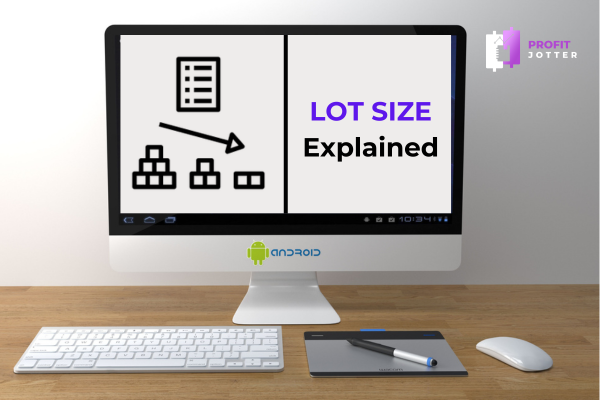Lot size is probably one of the most important factors you have to consider when starting forex trading.
It directly impacts your potential profits and losses, risk management, and overall trading strategy.
This guide will explore what lot sizes are, the different types available, how to calculate them, and why they are essential for effective trading.
What is Lot Size?
In Forex trading, a lot can be defined as the standard unit of measurement that denotes the volume or size of a trade.
It is essentially the amount of currency that the trader buys or sells in any single transaction.
Lot sizes help traders standardize their trades and manage their risk effectively.
Types of Lot Sizes
There are three main categories in Forex:
1. Standard Lot: This is the biggest size and is equivalent to 100,000 units of the base currency in a trade.
2. Mini Lot: This amounts to 10,000 units of the base currency.
3. Micro Lot: This is a lot equal to 1,000 units of the base currency.
4. Nano lots are given by some brokers, which correspond to 100 units.
Understanding the different sizes surely will be a big plus toward handling your trades appropriately.
Importance of Lot Size
Lot size determines how much you can potentially gain or lose in the trade.
If you opt for a standard lot size, then with each pip movement, your profit or loss will equate to roughly $10.
This would be around $1 with mini lots, and for micro lots, around $0.10.
Impact on Profit and Loss
When you understand how lot sizes affect your profit and loss calculations, you can make more informed trading decisions.
For example, if you buy one standard lot of EUR/USD at an exchange rate of 1.2000 and sell it at 1.2050, that’s a movement of 50 pips.
Your profit would be calculated as Profit = Pip Movement x Pip Value
For a standard lot, which would be 50 x 10 = $500.
Conversely, if you were trading a micro lot under the same conditions:
Profit = 50 × 0.10 = $5
This example illustrates how choosing the right lot size can significantly impact your financial outcomes.
Lot Size Calculation
Calculating the proper size for your trades involves considering account balance, risk tolerance, and even details of the trade itself.
Step-by-Step Calculation
1. Calculate your risk tolerance:
Decide how much of your account balance you are willing to risk on a single trade.
A common guideline is to risk no more than 1-2% of the total of your account balance on any single trade.
2. Calculate Position Size in Units:
Use the formula of Position Size = (Account Balance x Risk Percentage) / (Stop Loss in Pips x Pip Value), calculate how much to buy or sell depending on the size of the position, which corresponds to your calculated risk.
3. Choose the Lot Size: Based on the calculated position size, choose the appropriate lot size (standard, mini, or micro) that aligns with your risk management strategy.
Alternatively, one can use a lot size calculator for it.
Managing Your Trade Sizes Effectively
Lot Size Adjustment based on Market Conditions:
It is often wise to decrease the lot size in very volatile markets just to minimize risks and to increase it when market conditions seem stable.
Using Leverage Wisely:
Leverage allows traders to control larger positions with smaller amounts of capital.
However, it also increases risk exposure.
For example, with leverage of 100:1, you can control $100,000 with just $1,000 in your account.
While this can amplify profits, it can also magnify losses if not managed carefully.
Using Stop-Loss Orders:
Using stop-loss orders is essential for protecting your capital when trading with larger lot sizes.
A stop-loss order automatically closes your position when it reaches a certain price level to limit losses.
Common Mistakes to Avoid
– Overleveraging:
Using too much leverage without understanding the implications of it can cost you dearly-in most cases, losses exceeding your initial investment.
– Ignoring Risk Management:
Not utilizing proper risk management techniques can result in significant financial losses.
– Not Adapting Lot Sizes:
Traders often stick to one fixed lot size regardless of their account balance or market conditions.
Adapting your lot size according to changes in these factors is crucial for maintaining effective risk management.
Conclusion
Being able to understand and deal with the size of lots is crucial for you as a Forex trader.
You will be able to calculate the right position size, taking into account your account balance and risk tolerance.
You can then scale your trading strategy by adapting it to current market conditions.
As you continue your trading journey, remember that effective management of lot sizes protects your capital and empowers you to take advantage of market opportunities confidently.




